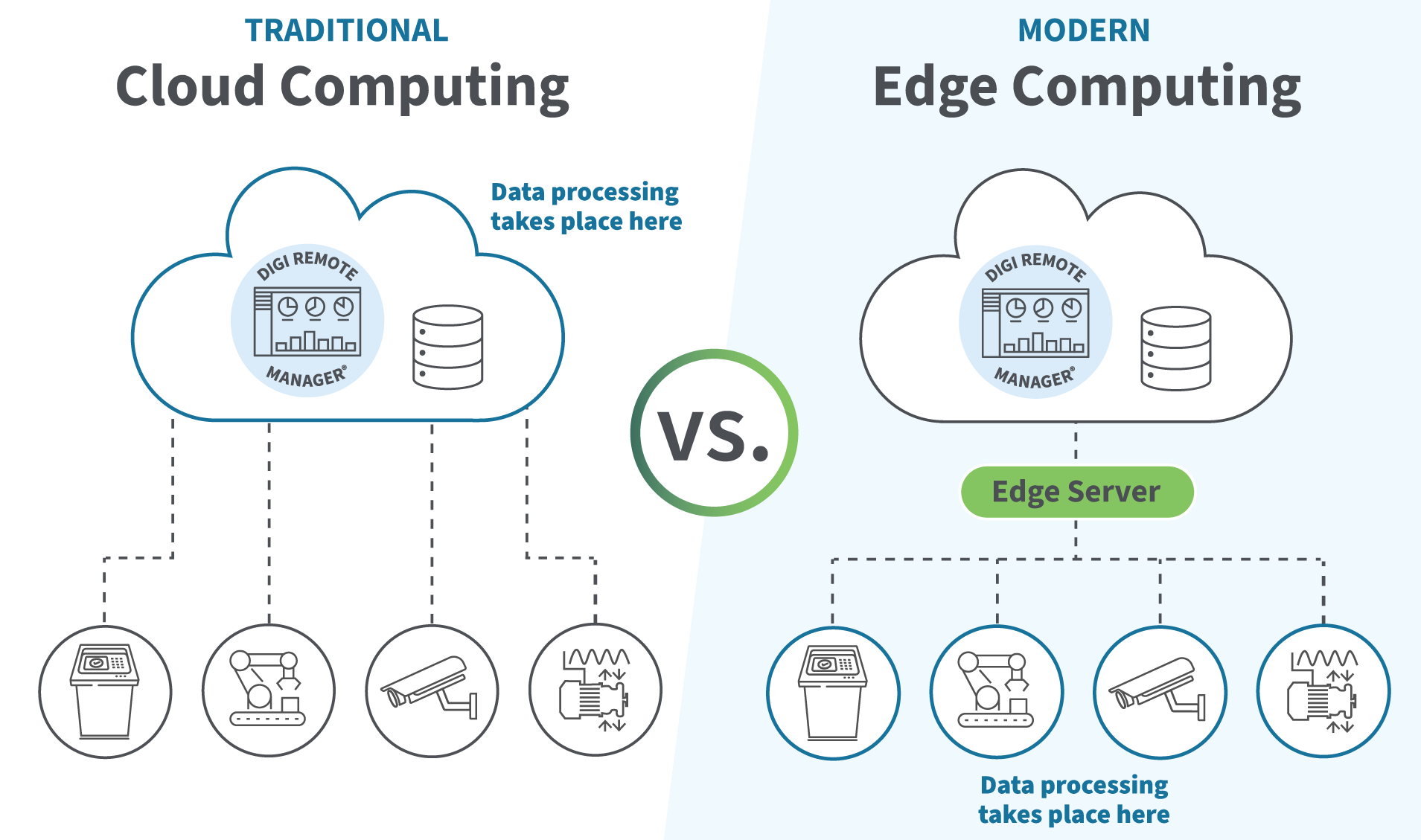
Edge Computing vs. Cloud Computing: What’s the Difference?
From smart devices and IoT sensors to AI-driven applications, the need for fast, secure, and reliable data processing has never been greater. While cloud computing has been the go-to solution for over a decade, edge computing is emerging as a powerful alternative. But what exactly sets them apart, and when should businesses use one over the other?
Understanding Cloud Computing
Cloud computing refers to the delivery of computing services—such as storage, processing, and applications—over the internet via centralized data centers. Instead of maintaining expensive in-house servers, businesses can access resources on-demand from providers like AWS, Microsoft Azure, or Google Cloud.
✅ Key Characteristics of Cloud Computing:
-
Centralized data centers manage storage and processing.
-
Flexible and scalable (pay-as-you-go model).
-
Ideal for businesses needing collaboration, remote access, or centralized data storage.
Example: A hospital can store electronic medical records in the cloud, allowing doctors across different branches to access patient histories instantly.
Understanding Edge Computing
Edge computing processes data closer to the source where it is generated—whether it’s a sensor, mobile device, or smart appliance. Instead of sending all information back to a remote data center, edge devices handle critical processing locally.
✅ Key Characteristics of Edge Computing:
-
Data is processed near the user or device.
-
Reduces latency and improves real-time decision-making.
-
Ideal for scenarios requiring instant responses, even without constant internet connectivity.
Example: Self-driving cars cannot wait for cloud servers to respond—they must process data instantly at the edge to avoid accidents.
Cloud vs. Edge: The Key Differences
| Feature | Cloud Computing | Edge Computing |
|---|---|---|
| Processing Location | Centralized data centers | Near the data source (local devices) |
| Latency | Higher, due to distance from user | Very low, as data is processed locally |
| Best For | Storage, collaboration, remote access, scaling apps | Real-time processing, IoT, AI at the edge |
| Connectivity Needs | Requires internet connection | Can function even with limited connectivity |
| Scalability | Virtually unlimited | More limited, tied to local infrastructure |
When Should Businesses Use Cloud vs. Edge?
-
Cloud Computing is best for:
-
Startups and SMEs managing costs.
-
Businesses that require scalability and flexibility.
-
Workloads like data storage, remote collaboration, and enterprise applications.
-
-
Edge Computing is best for:
-
Real-time operations like manufacturing, logistics, or healthcare monitoring.
-
Businesses dealing with IoT devices and autonomous systems.
-
Use cases requiring instant responses without delay.
-
👉 Many modern enterprises use both in a hybrid approach: cloud for storage and analytics, and edge for real-time decision-making.
Conclusion
Cloud computing will remain essential for scalable data storage and global collaboration. However, edge computing is redefining industries where speed, reliability, and real-time processing are critical. Businesses should not view them as competitors but as complementary technologies that, when combined, provide a future-ready IT infrastructure.